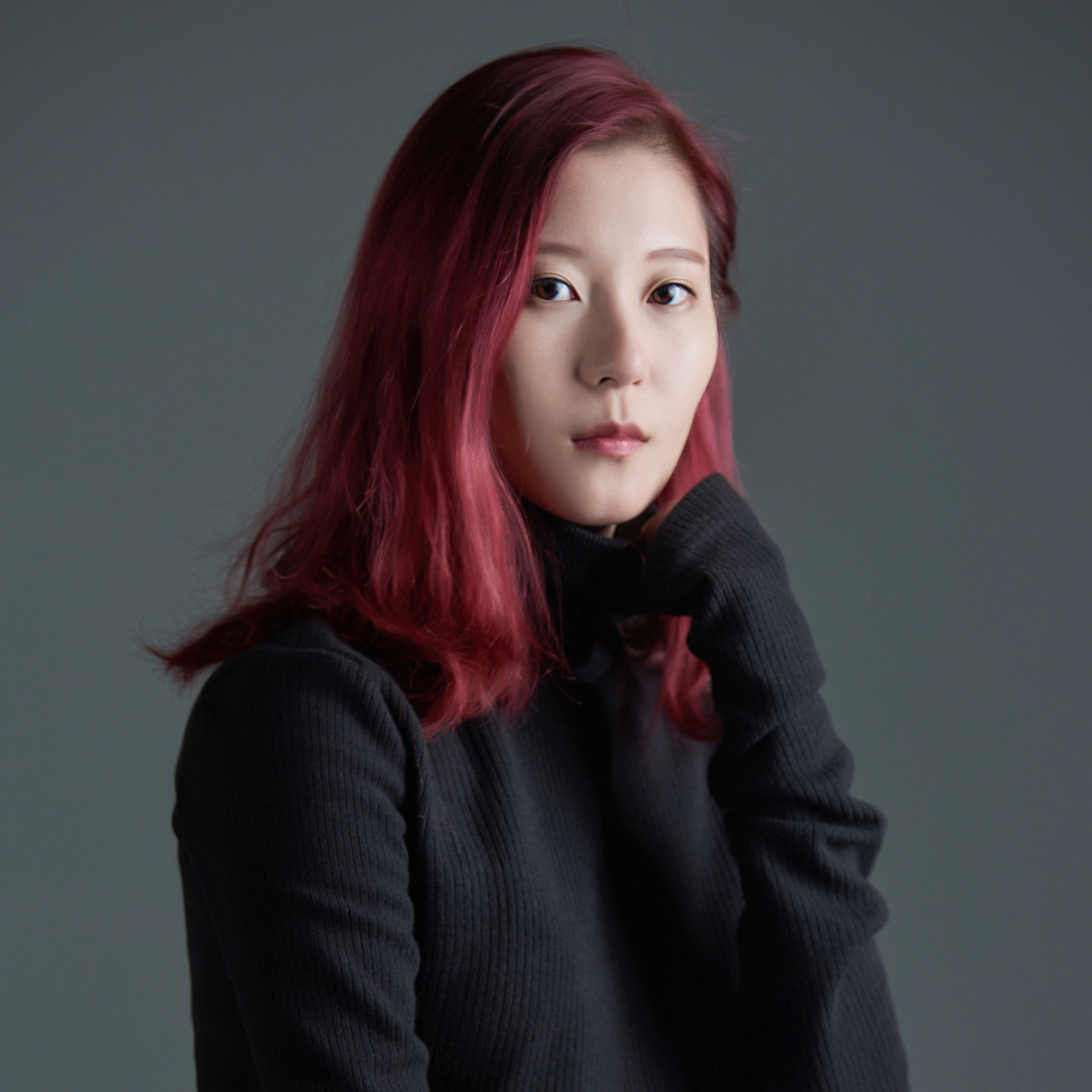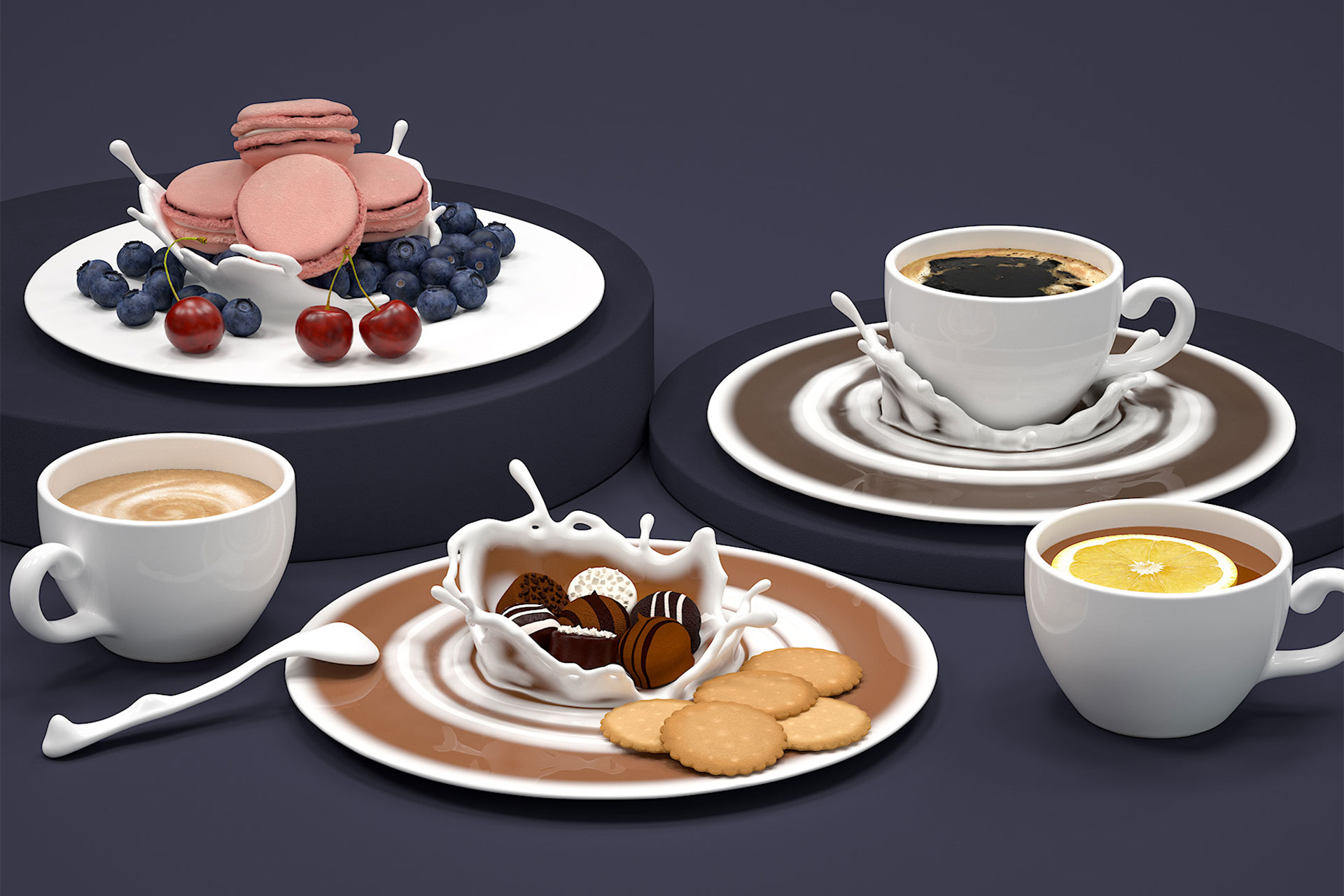Interview with Jessica Zhengjia Hu for Splashy Cup and Saucer Sets

Interview with FanYu Tseng of Medi-Muse Design CORP.
September 19, 2023
Interview with Peiyang (Camille) Li from China
September 19, 2023Jessica Zhengjia Hu
In her early years, Jessica Zhengjia Hu's parents introduced her to art through frequent visits to exhibitions. At age 7, she joined her elementary school's art group, where her first teacher prepared her for competitions, marking her entry into the art world.
Interview With The 2023 MUSE Design Awards Winner – Jessica Zhengjia Hu
When I was younger, my parents took me to lots of art events and exhibitions to nurture my love for art. At just 7 years old, I joined my elementary school's art group, where my first teacher trained us for art competitions. That's when I first stepped into the art world.
My dream was always to work in the creative industry but I ultimately chose business and economics as my college majors because I believed being a designer required not only creativity but also critical thinking and a good grasp of market trends. After getting my economics degree from the University of Michigan, I pursued design at Parsons in New York, where I truly learned how to think and work as a designer, marking the real start of my design career.
Since I was a child, my aspiration has always been to pursue a career in the creative industry. To me, art and design hold immense significance in my life. Art serves as a means through which I can perceive, experience, and communicate with the world, while design acts as a tool for exploring potential future possibilities.
I firmly believe that design is a form of empowerment that enables us to address various challenges, ultimately enhancing the quality, functionality, and overall well-being of our lives. I've always sought a path that would consistently ignite my passion and drive, and I'm immensely grateful that I've chosen a career in a field that I am genuinely passionate about.
No. 72 Design Studio, based in Shenzhen, China, is an independent creative hub. We specialize in various design services like graphic design, product design, packaging design, layout design, and even offer design-related consultations. Our mission is all about using different design approaches and staying updated with market trends to provide solutions that enhance people's lives and make them happier.
Just like the Monkey King, a powerful figure from Chinese mythology capable of 72 transformations, we believe that the intelligence, creativity, and untapped potential of humans, when channeled through design, can be even more remarkable.
I enjoy engaging in product, graphic, and apparel design, all of which have strong ties to our daily lives. Additionally, I continually seek to expand my skills and tackle new design realms, particularly those driven by emerging technologies. I have a passion for taking on diverse and stimulating projects, and I firmly believe that various design categories share interconnected elements.
Thanks to advancing technology, we now have the ability to create items that serve multiple purposes and adapt to various situations, enhancing their usefulness and functionality.
I hold the belief that effective design must combine functionality and practicality. It's insufficient for designers to solely concentrate on the visual aesthetics while disregarding the usability and practicality of a product. Striking the right balance is crucial; otherwise, the end result might resemble superficial "eye candy" that appears impressive but lacks substance.
Moreover, the central concept behind a design is of paramount importance as it encapsulates the product's core value. If functionality represents the body, then the concept serves as the soul. A well-defined concept elucidates the unique attributes of the product, clarifying its purpose and differentiation from other similar items. I firmly contend that a successful design has the potential to bring satisfaction and joy to people, either physically, mentally, or both.
When fresh ideas spark in my mind, my initial step is to jot them down in my notes. Following that, I embark on a quest for valuable information and resources to shape the fundamental concept and framework. Next, I determine the practical functionalities of the product and initiate the drafting process. Once the ultimate draft is chosen, I translate it into 3D models using computer software.
Extensive testing and revisions are crucial before the design is deemed suitable for prototyping. Ultimately, I prepare a comprehensive presentation for the final product, allowing me to introduce it to potential customers whenever the opportunity arises.
Certainly, without a doubt. I was raised in Shenzhen, a captivating, modern coastal city in China. I have a profound appreciation for my country's rich cultural heritage, and I firmly believe that design should be boundless and free from cultural constraints. I think that ideas and concepts should be diverse and all-encompassing. I constantly strive to infuse Eastern cultural elements into my designs.
Having lived in both Eastern and Western countries, my perspective is more adaptable and open-minded. These diverse experiences enable me to approach matters from multiple angles. Nevertheless, there are instances where certain mainstream values in my homeland may differ significantly from Western values. This can lead to conflicting considerations during the creative process.
As a designer, one of the greatest sources of joy and fulfillment in my life is the opportunity to showcase my creations and receive recognition from individuals. Receiving acknowledgment from fellow design experts provides me with not only encouragement but also a renewed sense of motivation and determination to forge ahead.
It's an incredibly humbling and gratifying experience when people express their admiration for my work because it signifies that my diligent efforts are bearing fruit, and I've had the privilege of making a small contribution towards improving our vast world.
The "Splashy Cup and Saucer Sets" project features porcelain tableware designed to capture the elegance of liquid motion, specifically the moment when liquid collides, forming crown-like splashes that blend into ripples. These versatile sets can be utilized for various purposes; the cups for beverages, and the saucers for desserts, pastries, or fruit presentation. Placing food on the saucer creates a visually appealing effect, resembling a soak in fresh milk, enhancing its appeal and hygiene. The sleek porcelain design exudes cleanliness, making the food appear more enticing.
Beyond their functional use, these saucers can also serve as decorative items. The concept for this project arose during a coffee-making session, where the contrast between strong, bitter black coffee and smooth, pure milk sparked the idea of intriguing physical and chemical reactions.
Similarly, in our lives, diverse personalities and perspectives can lead to unexpected and valuable ideas when we engage with others who have different viewpoints. This project's inspiration aligns with the ethos of the design competition, highlighting how competition among designers with varied backgrounds and ideas can ignite innovation and contribute to a brighter future.
Participating in the MUSE Design Awards has been an incredibly valuable experience. It has provided me with the opportunity to admire outstanding works crafted by talented designers hailing from diverse countries with varying interests and cultural backgrounds. This platform has served as a great avenue for me to absorb fresh ideas, acquire new skills, and learn innovative techniques from fellow participants.
Engaging in this competition has allowed me to assess my strengths and weaknesses, akin to a report card that highlights what I've excelled in and areas where I have room for improvement. This feedback and positive evaluation serve as a testament to my prior efforts, offering motivation to continually enhance my skills and push forward.
As we can observe, the design industry has become increasingly diverse and inclusive in recent years, thanks to rapid advancements in science and technology. These developments have given us more flexibility in terms of forms, techniques, and platforms. Looking ahead, I believe the concept of the "Metaverse" may gain popularity and possibly become mainstream.
Furthermore, we can expect to see more art and design works across various fields. Another intriguing trend is Artificial Intelligence (AI). I've seen AI robots create art in the news, and it's astonishing how creative and productive they can be. They might pose significant competition not just in manufacturing but also in the creative industry. Fortunately, this competitive pressure can serve as motivation, driving us to keep innovating and progressing.
My favorite artist, Vincent Van Gogh, once remarked, "What would life be if we had no courage to attempt anything?" Meanwhile, my favorite fashion designer, Alexander McQueen, emphasized the significance of making mistakes, stating, "You can only go forward by making mistakes." He also underscored the importance of pushing oneself forward as a designer and staying in tune with trends or even creating new ones.
These quotes continually impress, inspire, and motivate me. We live in an era of rapid innovation and evolution, where remaining in our comfort zones exposes us to the risk of being left behind by the tide of progress. Instead of fearing difficulties and errors, we should embrace them as valuable lessons and experiences. The only path to improvement lies in relentless exploration and forward movement.
Winning Entry
Splashy Cup and Saucer Sets | 2023
The inspiration of these cup and saucer sets came from the blending process of coffee and milk. The project intends …
(Read more at MUSE Design Awards)
Jessica Zhengjia Hu
In her early years, Jessica Zhengjia Hu's parents introduced her to art through frequent visits to exhibitions. At age 7, she joined her elementary school's art group, where her first teacher prepared her for competitions, marking her entry into the art world.
Read more about Jessica Zhengjia Hu’s interview for the 2023 London Design Awards!


